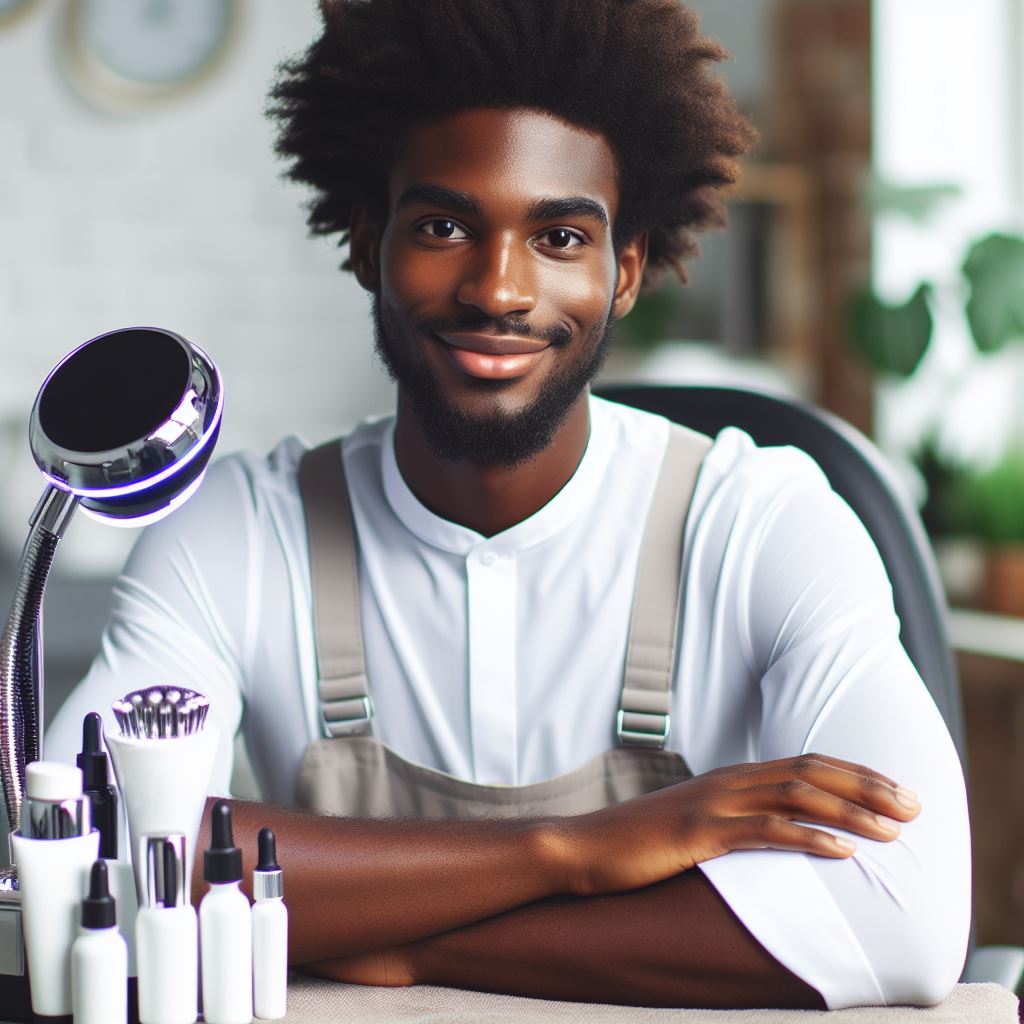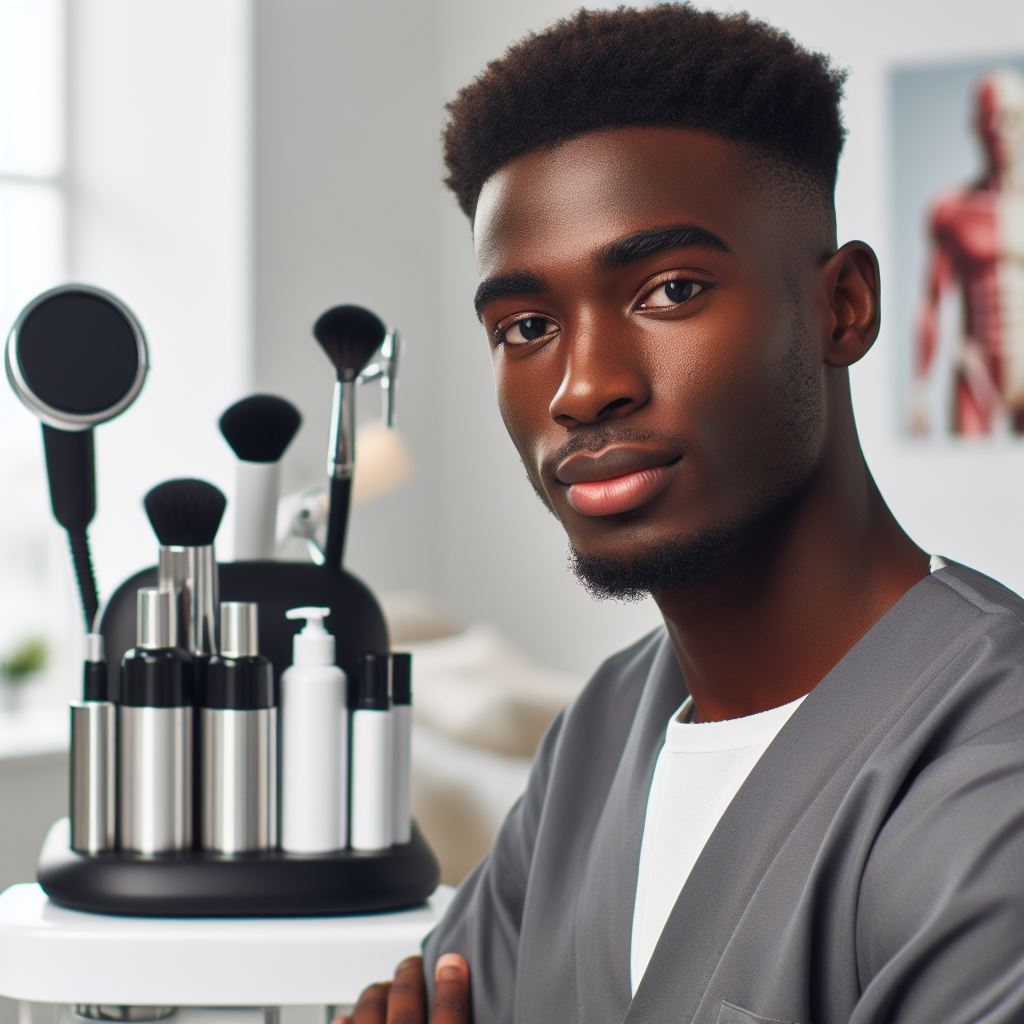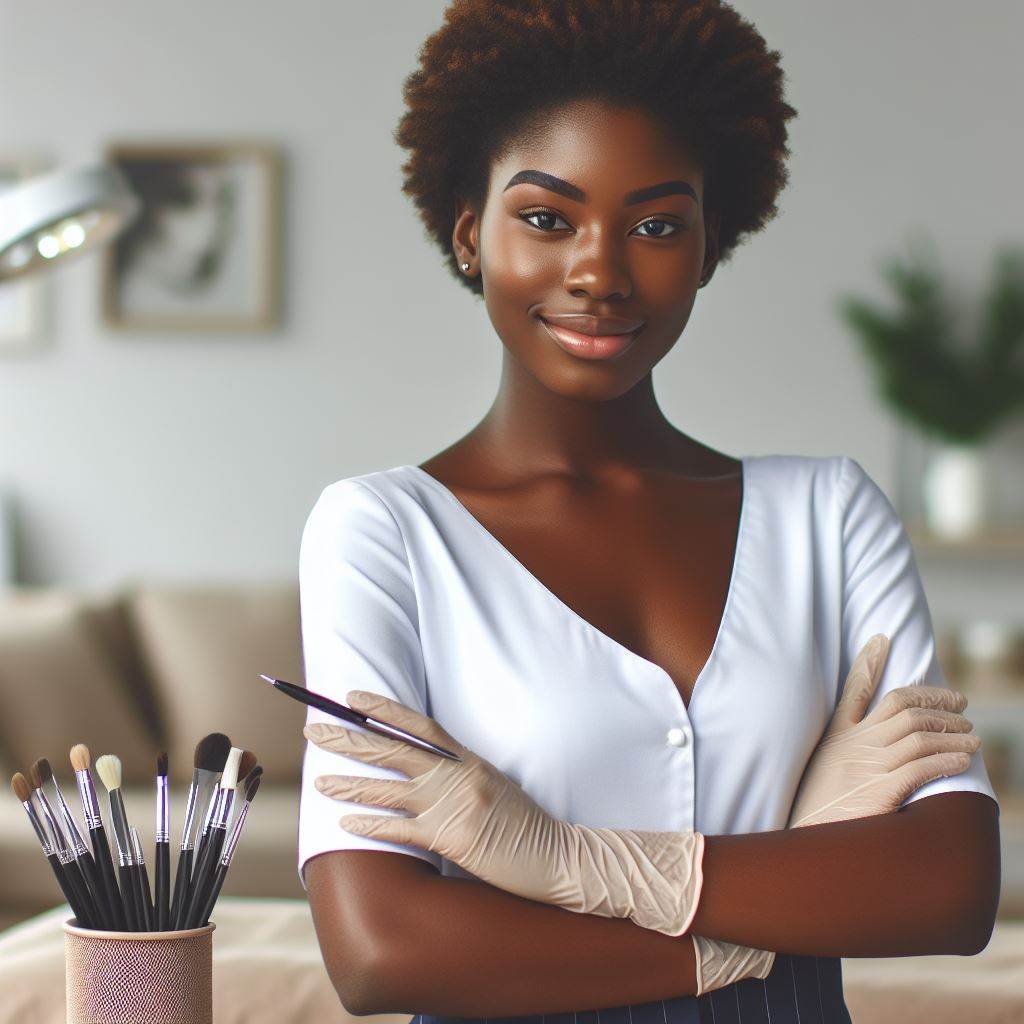Introduction
Beauty therapy plays a crucial role in enhancing one’s appearance and boosting self-confidence.
However, there are common mistakes that can undermine the effectiveness of beauty treatments.
Exfoliation is essential but overdoing it can damage the skin’s barrier and lead to irritation.
Skipping patch tests before trying new products can result in allergic reactions or skin sensitivities.
Leaving makeup on overnight can clog pores, leading to breakouts and dull-looking skin.
Using products not suited for your skin type can worsen existing skin issues or cause new ones.
Performing DIY treatments without proper knowledge can harm the skin and result in adverse effects.
Overdoing professional treatments like chemical peels or lasers can cause damage to the skin.
Failure to use sunscreen daily can lead to premature aging, sunspots, and skin damage.
In essence, avoiding these common mistakes in beauty therapy is essential for achieving optimal results.
Lack of Proper Consultation
Importance of conducting a thorough consultation
Before delving into any beauty treatment, ensuring a thorough consultation is paramount.
It sets the stage for a successful session by providing vital insights into the client’s needs and expectations.
Without it, the risk of dissatisfaction and complications looms large.
Understanding the client’s expectations, skin type, allergies, and previous treatments
Understanding the client’s expectations is like deciphering a map to their desired destination.
Skin type knowledge enables tailored treatments, ensuring optimal results.
Awareness of allergies is not just precautionary; it’s a mandate to prevent adverse reactions.
Equally crucial is grasping their history of previous treatments, as it helps in devising a strategy that complements their journey toward beauty enhancement.
Consultation is more than just a formality; it’s a sacred ritual of trust-building.
It’s where bonds between therapist and client are forged, and paths toward beauty goals are charted.
Skipping this step is akin to sailing into the unknown without a compass—a gamble with potential repercussions.
The consultative process isn’t merely about ticking boxes on a checklist; it’s about active listening and empathy.
It’s about creating a safe space where clients feel heard and understood. It’s about empowering them with knowledge about their own skin and beauty needs.
In fact, a thorough consultation isn’t a luxury; it’s a necessity. It’s the bedrock upon which the edifice of successful beauty therapy stands.
So, let’s embrace it wholeheartedly, for in its embrace lies the key to unlocking the full potential of every beauty treatment.
Read: Benefits of Professional Beauty Therapy Training
Failure to Patch Test
One common mistake in beauty therapy is the failure to patch test products before applying them to the client’s skin. This step is crucial for several reasons:
Significance of Patch Testing
Before using any new product on a client, it is essential to patch test it on a small area of the skin.
This helps to determine if the product will cause any adverse reactions or irritations.
By patch testing, beauty therapists can identify any potential allergies or sensitivities the client may have to certain ingredients in the product.
This proactive approach prevents uncomfortable and sometimes harmful reactions.
Risks of Skipping Patch Testing
Skipping the patch test step can lead to serious consequences for both the client and the therapist.
Allergic reactions can range from mild redness and itching to severe swelling and even anaphylaxis.
Skin irritations such as rashes, blistering, or burning sensations are also common when products are not properly tested beforehand.
These issues can result in long-term skin damage and a negative experience for the client.
Additionally, failing to patch test can create liability concerns for the beauty therapist.
If a client experiences a negative reaction to a product that was not tested, the therapist could be held responsible for any resulting harm.
Overall, patch testing is a simple yet crucial step in the beauty therapy process.
It ensures the safety and well-being of the client while also protecting the reputation and professionalism of the therapist.
So, never underestimate the importance of patch testing before applying any new product to your client’s skin.
Read: Marketing Tips for Beauty Therapists in Nigeria
Transform Your Career with Expert Guidance
Get personalized mentorship consulting that’s tailored to your unique path. Our expert advice is actionable and exclusive.
Get StartedOveruse of Products
One common mistake to avoid in beauty therapy is the overuse of products. This may seem harmless, but it can actually have negative effects on the skin.
Negative Effects of Overusing Beauty Products
- Clogged Pores: Excessive product buildup can lead to clogged pores, causing acne and breakouts.
- Sensitivity: Overused products can strip the skin of its natural oils, leading to increased sensitivity and irritation.
- Dryness: Certain ingredients in beauty products can be drying, especially when used in excess, resulting in dry and flaky skin.
- Uneven Texture: Using too many products can disrupt the skin’s natural balance, leading to an uneven texture and tone.
- Allergic Reactions: Overuse of products increases the risk of allergic reactions and skin sensitivities.
Importance of Following Recommended Usage Guidelines
It is crucial to follow recommended usage guidelines to prevent skin damage and other complications.
These guidelines are put in place for a reason and should not be ignored.
Benefits of Following Recommendations
- Prevent Skin Damage: By using products as directed, you can avoid damaging your skin and causing long-term harm.
- Maximize Effectiveness: Following guidelines ensures that you get the most out of your beauty products and see better results.
- Save Money: Overusing products not only harms your skin but also wastes product, costing you more in the long run.
- Avoid Complications: Using products improperly can lead to skin complications that are difficult to reverse.
- Promote Healthy Skin: Following usage guidelines helps maintain the health and balance of your skin, promoting a radiant complexion.
Remember, less is often more when it comes to skincare. Stick to the recommended amount and frequency of product application to keep your skin happy and healthy!
Ignoring Proper Hygiene Practices
Proper hygiene practices are essential in maintaining a clean and safe environment in a beauty salon.
Failing to adhere to these practices can lead to a range of issues, from minor skin irritations to serious infections. Here are some common mistakes to avoid:
Maintaining Clean and Sanitized Tools and Equipment
- Regularly clean and disinfect all tools and equipment used in beauty treatments.
- Store tools in a clean and dry area to prevent the growth of bacteria and fungi.
- Replace disposable tools, such as cotton pads and swabs, after each use.
- Use autoclaves or chemical sterilization methods for tools that require more thorough cleaning.
Risks of Infections and Skin Irritations
- Not following proper hygiene practices can result in the spread of infections among clients.
- Bacteria, viruses, and fungi can easily transfer from one client to another through contaminated tools.
- Common skin infections like folliculitis, impetigo, and fungal infections can occur if tools are not cleaned properly.
- Clients with sensitive skin may experience allergic reactions or irritation due to unsanitary conditions.
Overall, maintaining proper hygiene practices in a beauty salon is crucial for the health and safety of both clients and staff.
By taking the time to clean and sanitize tools regularly, you can prevent the risk of infections and skin irritations, creating a more positive and professional environment for everyone.
Read: Guide to Starting a Mobile Beauty Therapy Business

Using Incorrect Techniques
When it comes to beauty therapy, using correct techniques is crucial for successful outcomes.
Importance of Proper Techniques
- Ensures client satisfaction
- Prevents skin damage
- Helps achieve desired results
- Builds credibility and trust with clients
By following proper techniques, beauty therapists can enhance their skills and provide excellent service.
Risks of Incorrect Techniques
- Can cause skin irritation
- May lead to allergic reactions
- Result in uneven application
- Could worsen existing skin conditions
Using incorrect techniques not only affects the client’s skin but also reputation as a beauty therapist.
Common Mistakes to Avoid
- Skipping patch tests
- Over-exfoliating the skin
- Using expired products
- Not following proper sanitation protocols
- Ignoring client’s skin concerns
By being aware of these mistakes and taking necessary precautions, beauty therapists can ensure safe and effective treatments.
Read: Top Beauty Therapy Equipment for Nigerian Salons
Skipping Skin Analysis
When it comes to beauty therapy, one of the most common mistakes that professionals make is skipping the crucial step of conducting a thorough skin analysis.
Here’s why it’s so important:
Significance of Conducting a Skin Analysis
- Understanding the client’s skin condition is vital for recommending suitable treatments.
- Allows for a tailored approach to address specific skin concerns effectively.
- Identifying underlying skin issues that may affect the outcome of the treatment.
- Helps in determining the most appropriate products and techniques for the client.
- Ensures the safety and well-being of the client during the treatment process.
Importance of Client’s Skin Condition
- Key factor in achieving desired results and client satisfaction.
- Provides insight into the skin’s current state and any potential sensitivities.
- Allows for a personalized treatment plan to address individual needs.
- Helps in preventing adverse reactions or complications during the treatment.
- Enhances the overall experience by delivering targeted solutions for optimal results.
By prioritizing a comprehensive skin analysis before administering any beauty treatment, professionals can ensure that they deliver the best possible service to their clients.
It’s a foundational step that sets the stage for success in the beauty therapy industry.
Failure to Provide Proper Aftercare Instructions
When it comes to beauty therapy, providing proper aftercare instructions is crucial for the success of treatments.
Failure to educate clients on post-treatment care can lead to unsatisfactory results and potential issues. Here are some key points to consider:
Importance of Educating Clients
Proper aftercare instructions are essential for clients to ensure that they maintain the benefits of their beauty treatments.
Educating clients helps them understand how to care for their skin, nails, or hair after the treatment to avoid any adverse reactions.
By providing comprehensive aftercare guidance, beauty therapists can establish trust with their clients and show that they prioritize their well-being.
Maximizing Benefits and Preventing Issues
When clients follow the recommended aftercare instructions, they can maximize the effectiveness of the treatment and see long-lasting results.
Guidance on post-treatment care can help prevent potential issues such as skin irritation, infections, or premature fading of hair color.
Regular maintenance and proper aftercare can also extend the longevity of beauty treatments, saving clients time and money in the long run.
Overall, providing proper aftercare instructions is a proactive approach that benefits both the clients and the beauty therapists.
It ensures that clients get the most out of their treatments while maintaining healthy and beautiful results.
Conclusion
It is crucial for beauty therapists to avoid common mistakes that can jeopardize client safety and satisfaction.
By summarizing the key points discussed in this blog post, beauty therapists can prioritize best practices and ensure a positive experience for their clients.
Remember, attention to detail, proper training, and communication are essential in the field of beauty therapy.
Let’s strive to continuously improve our skills and deliver top-notch services to our clients.
Remember, happy clients are the key to a successful beauty therapy business.
Common Mistakes to Avoid in Beauty Therapy
Key Points
Beauty therapists often make preventable mistakes. These errors can affect client safety and satisfaction.
Inadequate Hygiene
Poor hygiene standards lead to infections and client dissatisfaction. Always sterilize tools and maintain a clean workspace.
Incorrect Product Use
Using the wrong products for skin types causes adverse reactions. Understand each product’s ingredients and suitable applications.
Insufficient Communication
Lack of clear communication results in misunderstandings. Discuss client expectations and preferences before treatments.
Neglecting Continuous Education
Failing to update skills and knowledge can limit service quality. Attend workshops and stay informed about industry trends.
Ignoring Client Feedback
Disregarding feedback leads to repeat mistakes. Actively seek and implement client suggestions to improve services.
Prioritize Client Safety and Satisfaction
Adhere to best practices to ensure safety and satisfaction. Maintain high hygiene standards and use appropriate products. Communicate effectively and stay educated on new techniques.
Listen to client feedback and make necessary adjustments. Prioritizing these practices will enhance your reputation and client loyalty.




